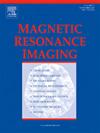MRI-based habitat analysis for Intratumoral heterogeneity quantification combined with deep learning for HER2 status prediction in breast cancer
IF 2
4区 医学
Q2 RADIOLOGY, NUCLEAR MEDICINE & MEDICAL IMAGING
引用次数: 0
Abstract
Background
Human epidermal growth factor receptor 2 (HER2) is a crucial determinant of breast cancer prognosis and treatment options. The study aimed to establish an MRI-based habitat model to quantify intratumoral heterogeneity (ITH) and evaluate its potential in predicting HER2 expression status.
Methods
Data from 340 patients with pathologically confirmed invasive breast cancer were retrospectively analyzed. Two tasks were designed for this study: Task 1 distinguished between HER2-positive and HER2-negative breast cancer. Task 2 distinguished between HER2-low and HER2-zero breast cancer. We developed the ITH, deep learning (DL), and radiomics signatures based on the features extracted from dynamic contrast-enhanced magnetic resonance imaging (DCE-MRI). Clinical independent predictors were determined by multivariable logistic regression. Finally, a combined model was constructed by integrating the clinical independent predictors, ITH signature, and DL signature. The area under the receiver operating characteristic curve (AUC) served as the standard for assessing the performance of models.
Results
In task 1, the ITH signature performed well in the training set (AUC = 0.855) and the validation set (AUC = 0.842). In task 2, the AUCs of the ITH signature were 0.844 and 0.840, respectively, which still showed good prediction performance. In the validation sets of both tasks, the combined model exhibited the best prediction performance, with AUCs of 0.912 and 0.917 respectively, making it the optimal model.
Conclusion
A combined model integrating clinical independent predictors, ITH signature, and DL signature can predict HER2 expression status preoperatively and noninvasively.
基于mri的肿瘤内异质性量化栖息地分析结合深度学习预测乳腺癌中HER2状态
背景:人表皮生长因子受体2 (HER2)是乳腺癌预后和治疗选择的关键决定因素。该研究旨在建立一个基于mri的栖息地模型来量化肿瘤内异质性(ITH),并评估其预测HER2表达状态的潜力。方法:回顾性分析340例经病理证实的浸润性乳腺癌患者的资料。本研究设计了两个任务:任务1区分her2阳性和her2阴性乳腺癌。任务2区分her2 -低和her2 -零乳腺癌。我们基于动态对比增强磁共振成像(DCE-MRI)提取的特征开发了ITH、深度学习(DL)和放射组学签名。采用多变量logistic回归确定临床独立预测因子。最后,通过整合临床独立预测因子、ITH特征和DL特征构建组合模型。接受者工作特征曲线下面积(AUC)作为评价模型性能的标准。结果:在任务1中,ITH签名在训练集(AUC = 0.855)和验证集(AUC = 0.842)中表现良好。在任务2中,ITH特征的auc分别为0.844和0.840,仍然具有较好的预测性能。在两个任务的验证集中,组合模型的预测效果最好,auc分别为0.912和0.917,是最优模型。结论:结合临床独立预测因素、ITH特征和DL特征的联合模型可以预测HER2术前和无创表达状态。
本文章由计算机程序翻译,如有差异,请以英文原文为准。
求助全文
约1分钟内获得全文
求助全文
来源期刊

Magnetic resonance imaging
医学-核医学
CiteScore
4.70
自引率
4.00%
发文量
194
审稿时长
83 days
期刊介绍:
Magnetic Resonance Imaging (MRI) is the first international multidisciplinary journal encompassing physical, life, and clinical science investigations as they relate to the development and use of magnetic resonance imaging. MRI is dedicated to both basic research, technological innovation and applications, providing a single forum for communication among radiologists, physicists, chemists, biochemists, biologists, engineers, internists, pathologists, physiologists, computer scientists, and mathematicians.
 求助内容:
求助内容: 应助结果提醒方式:
应助结果提醒方式:


